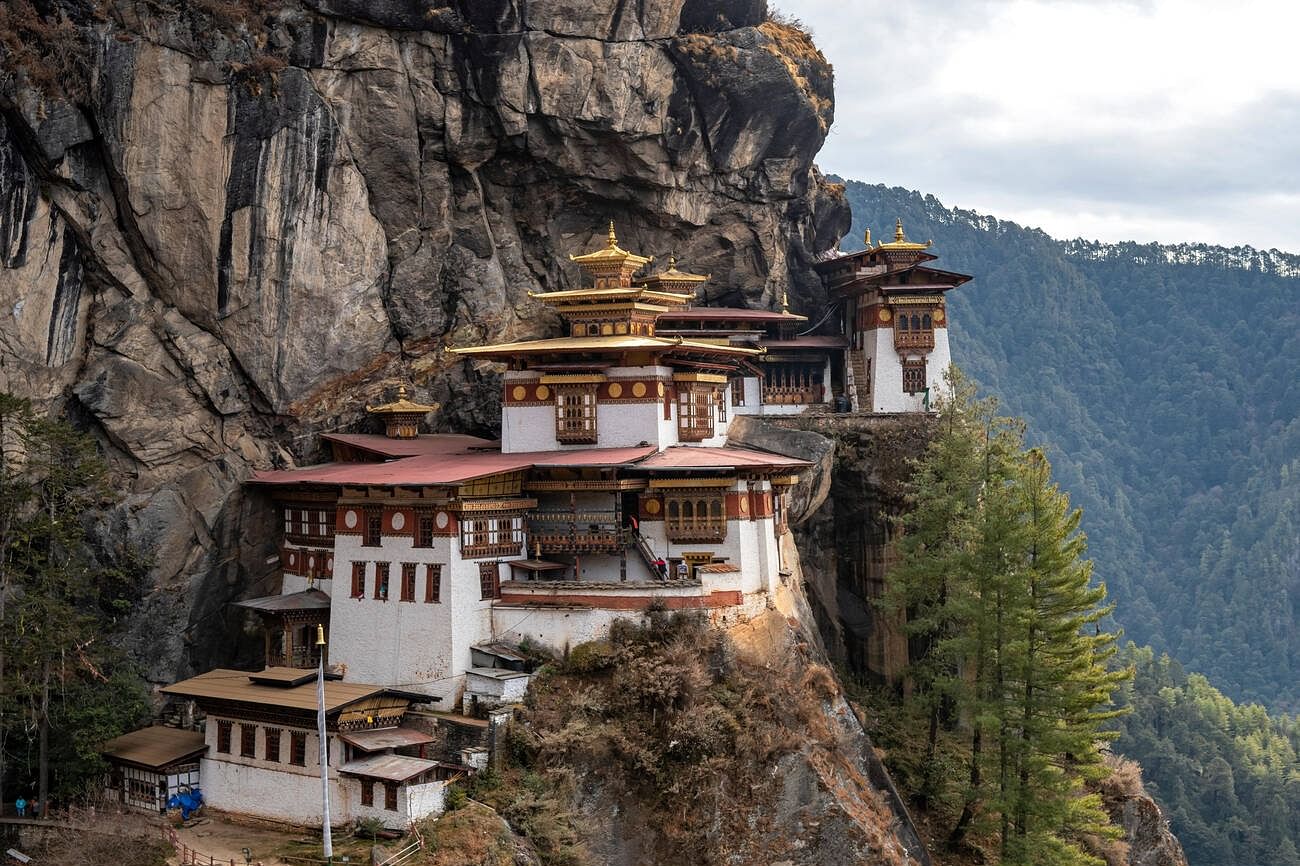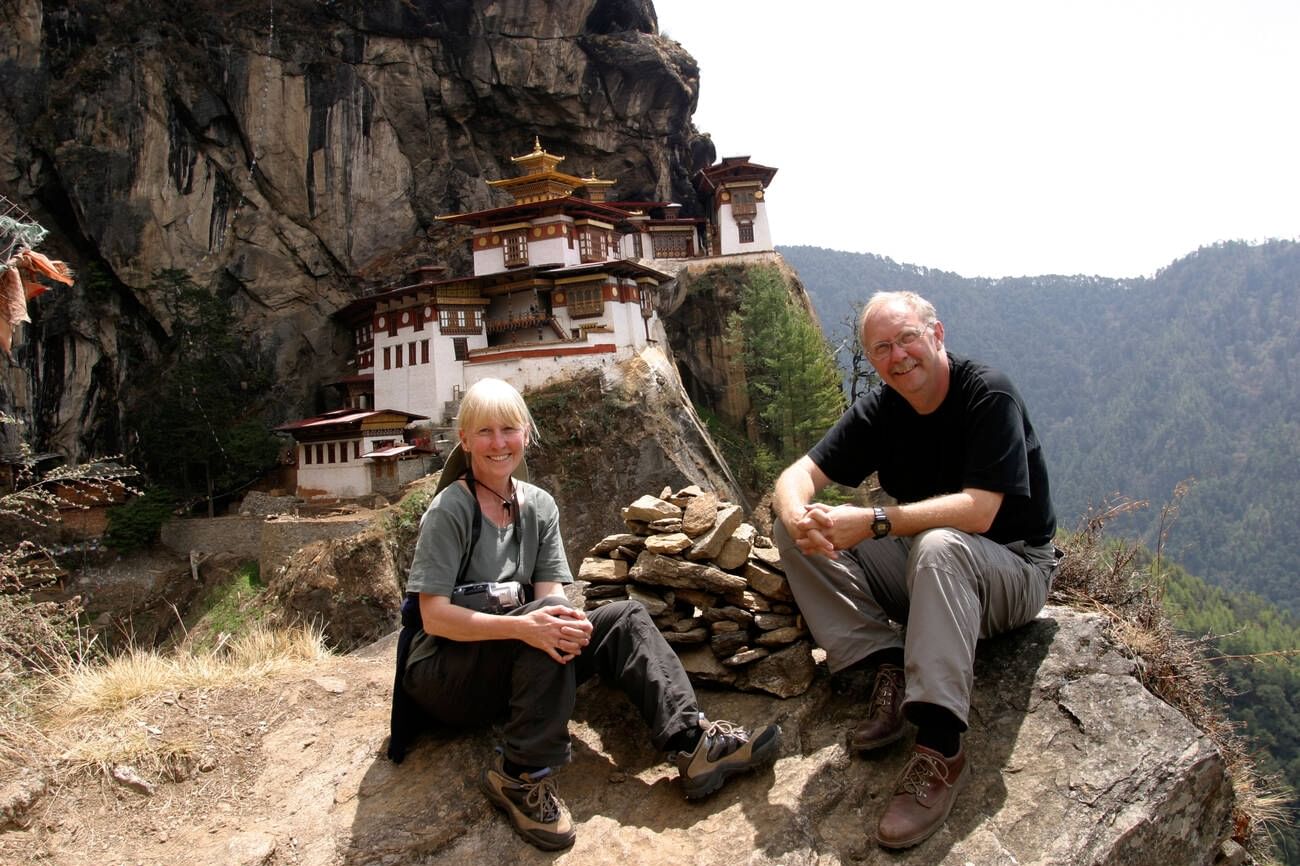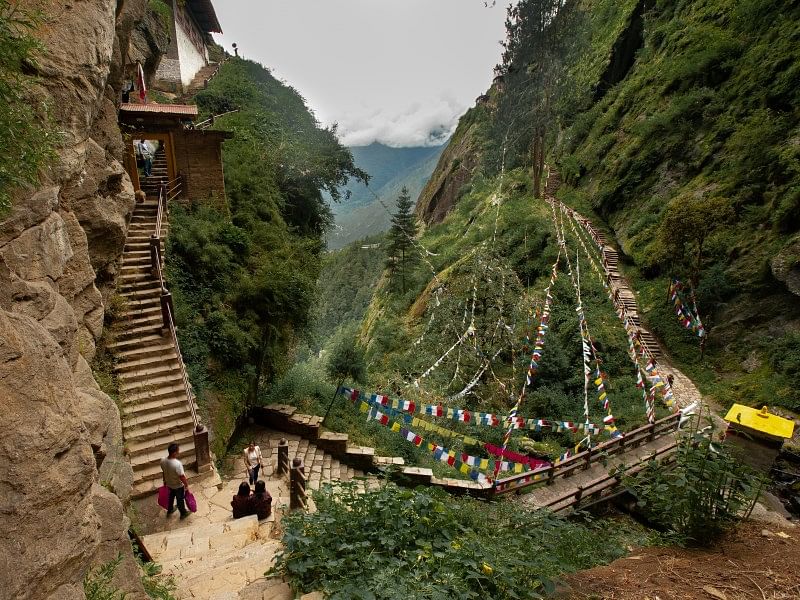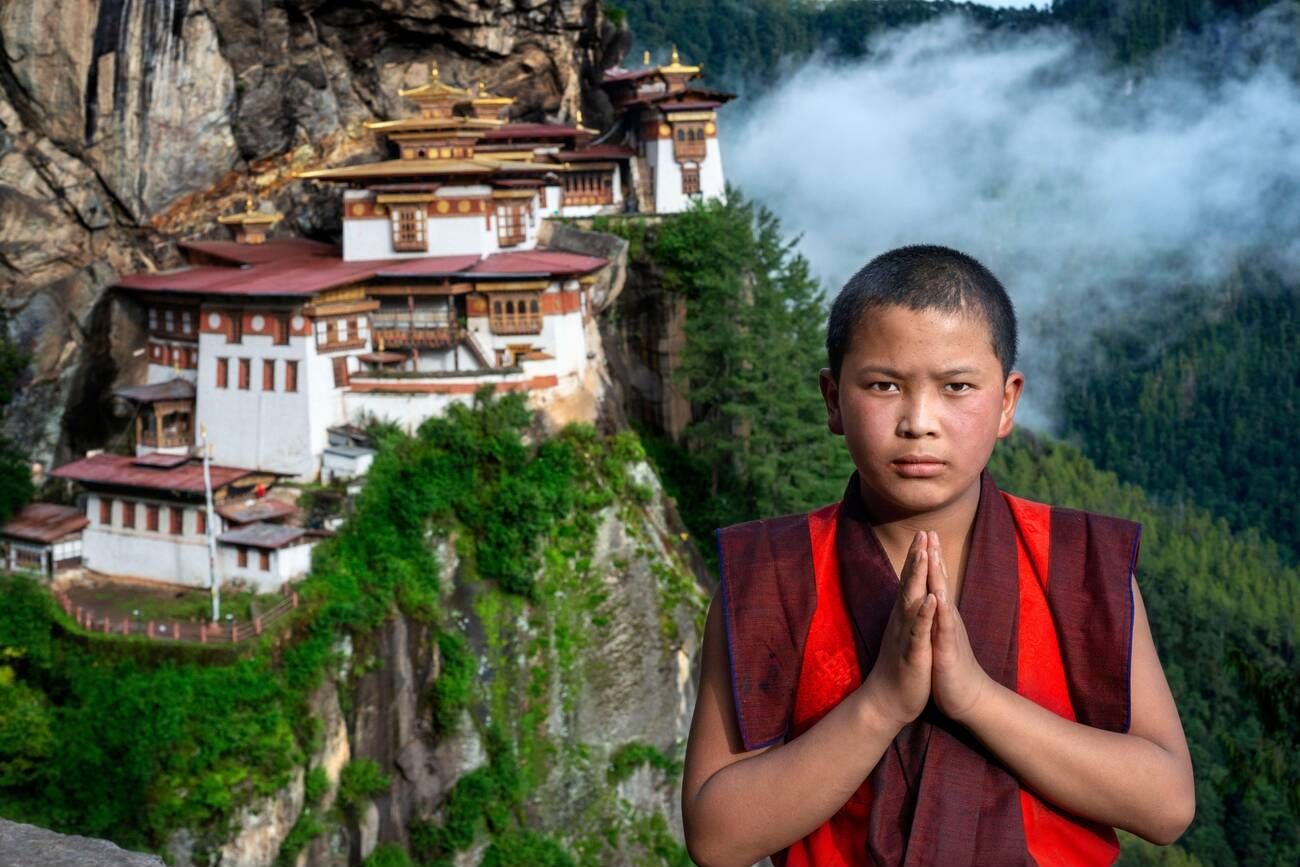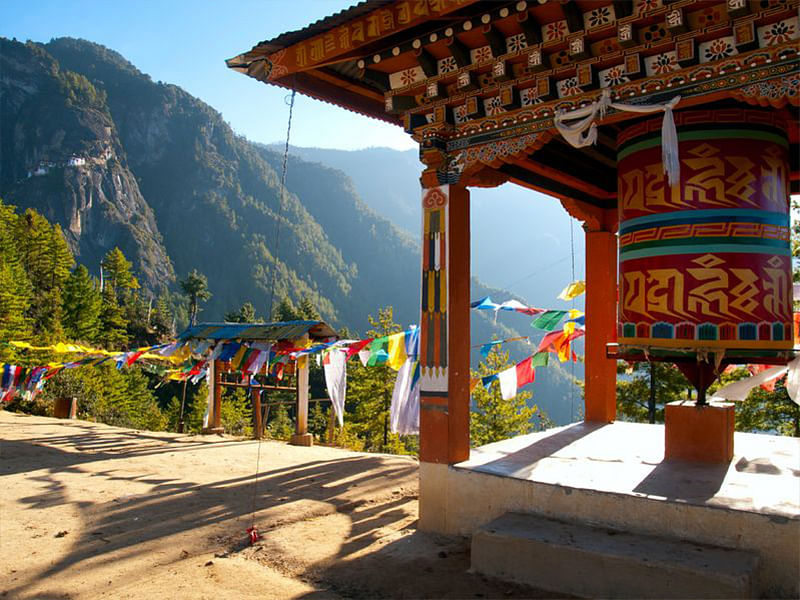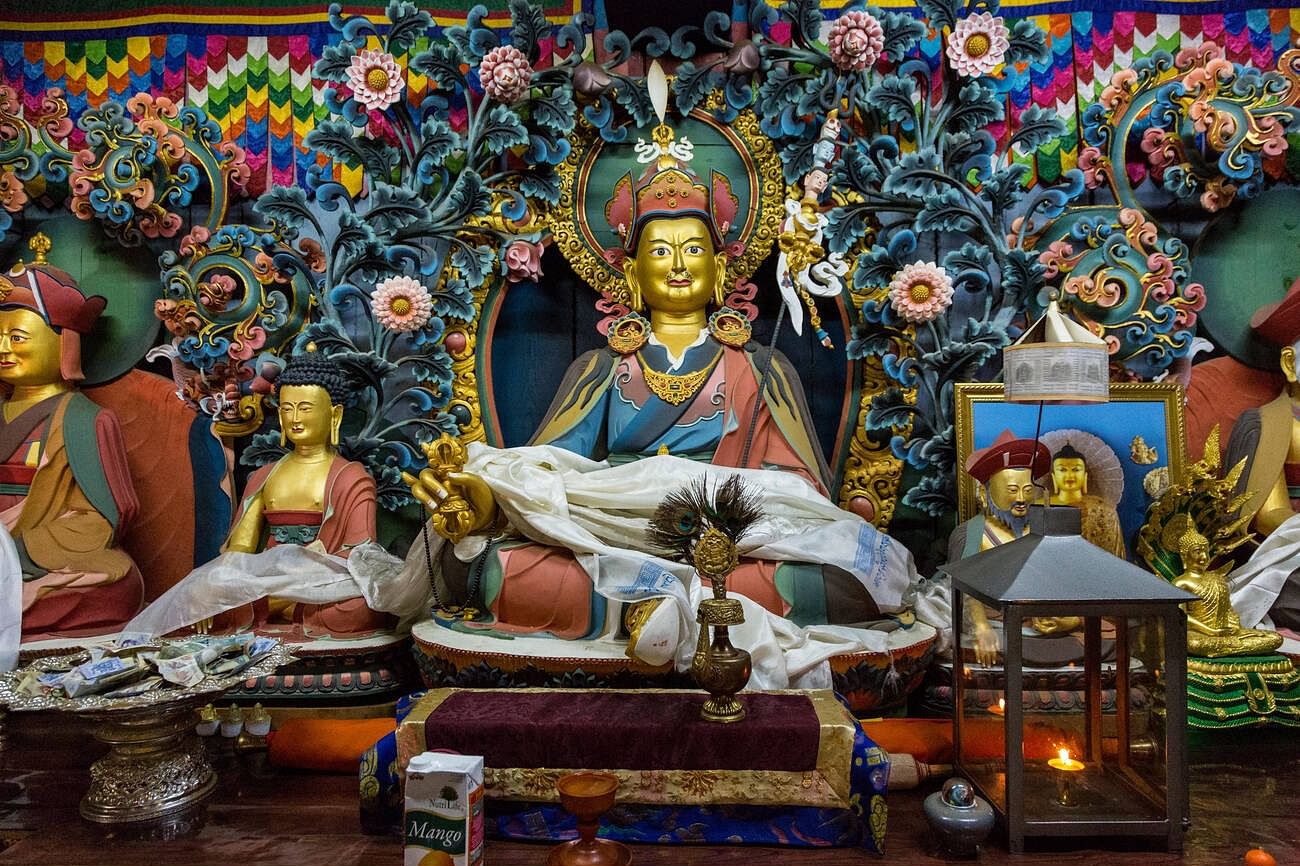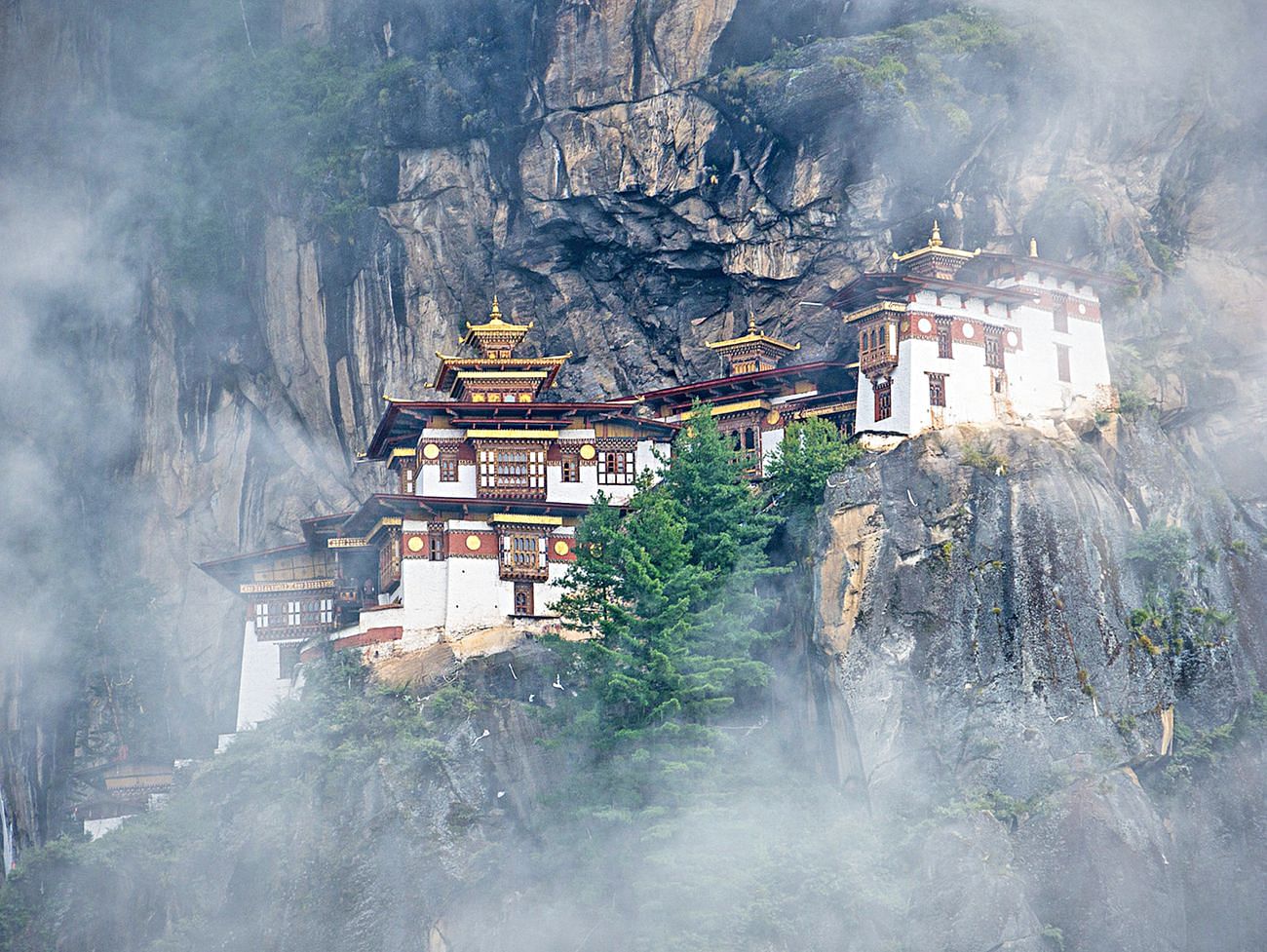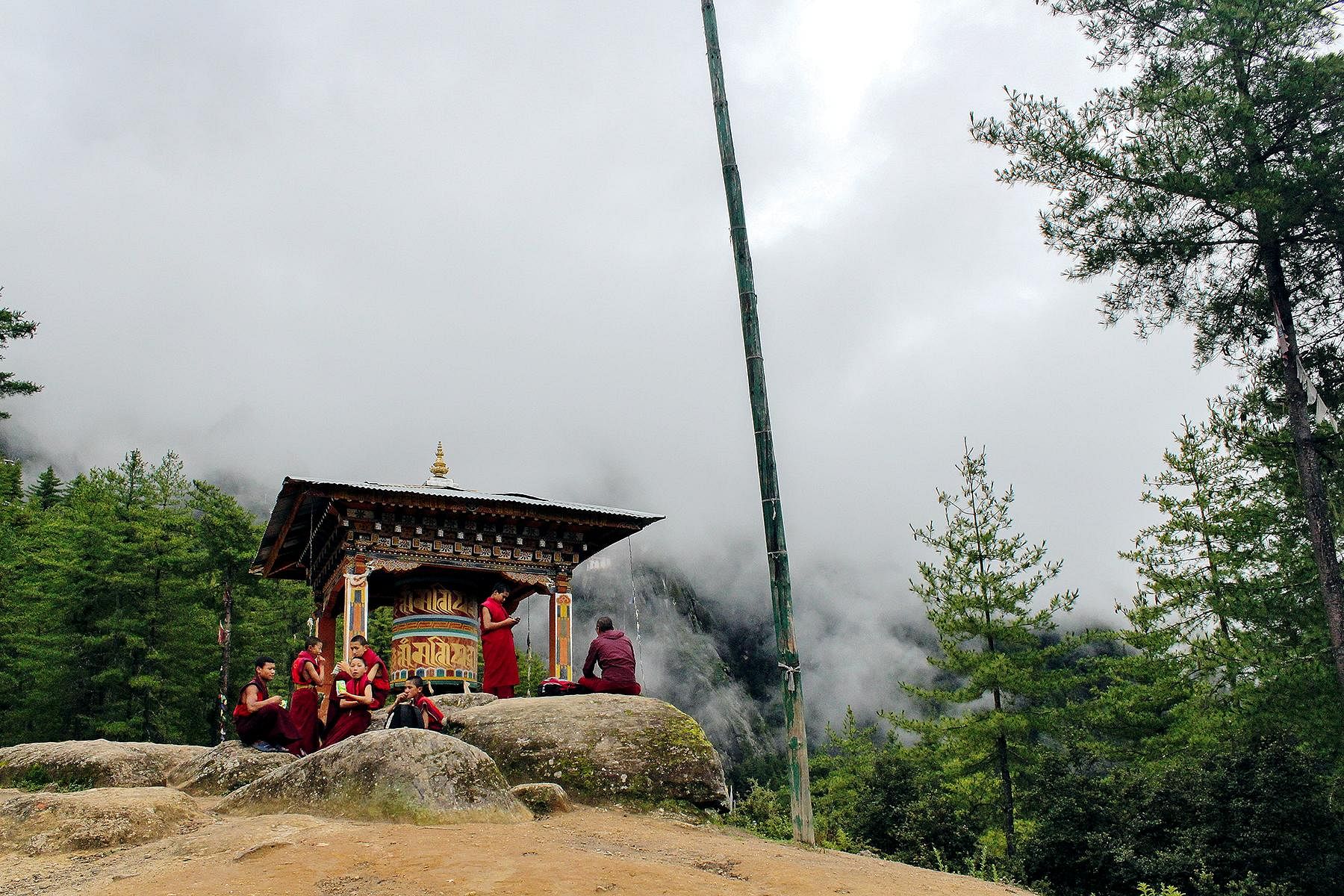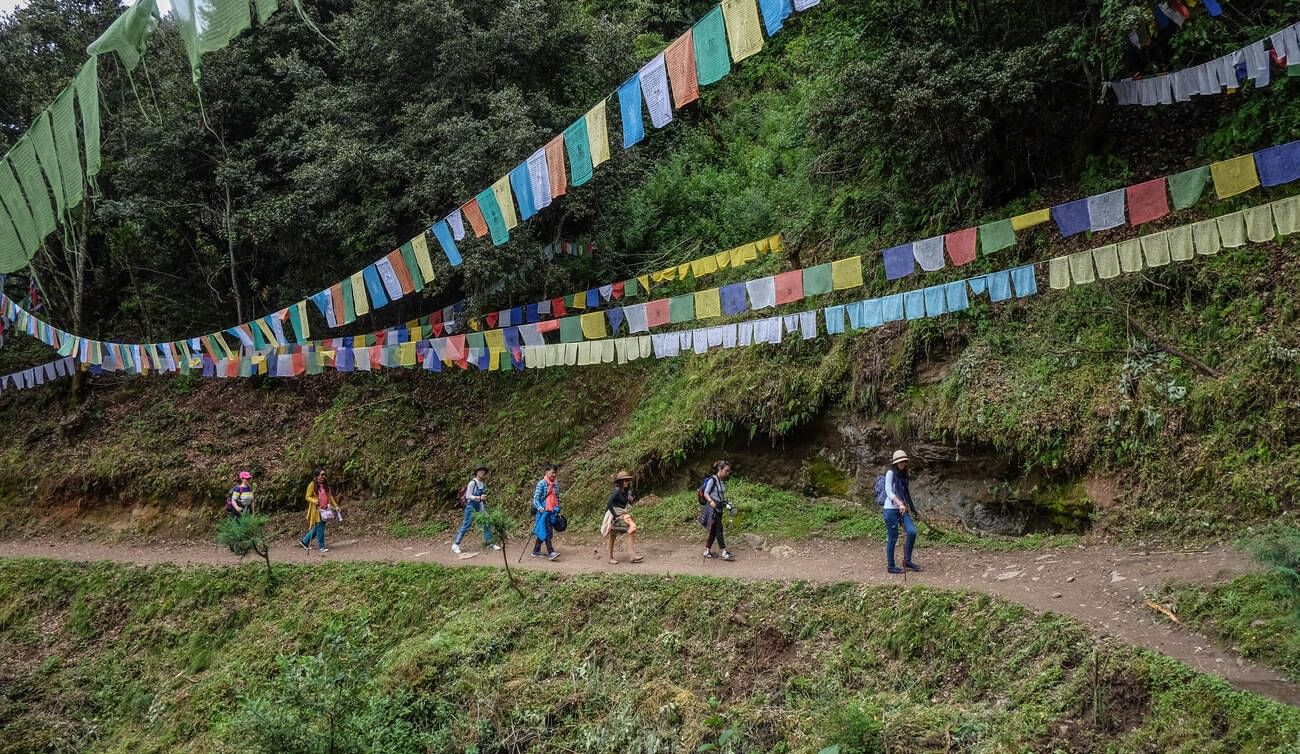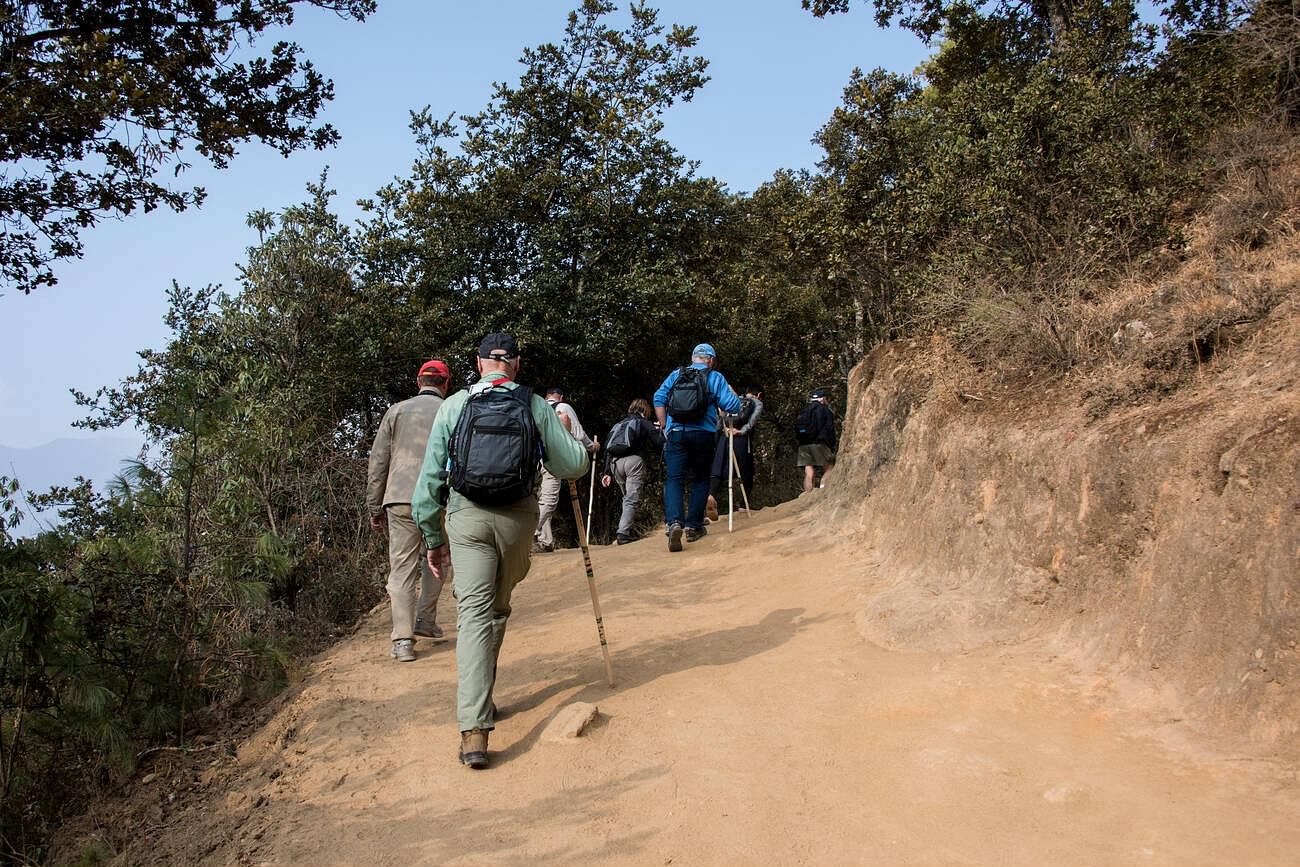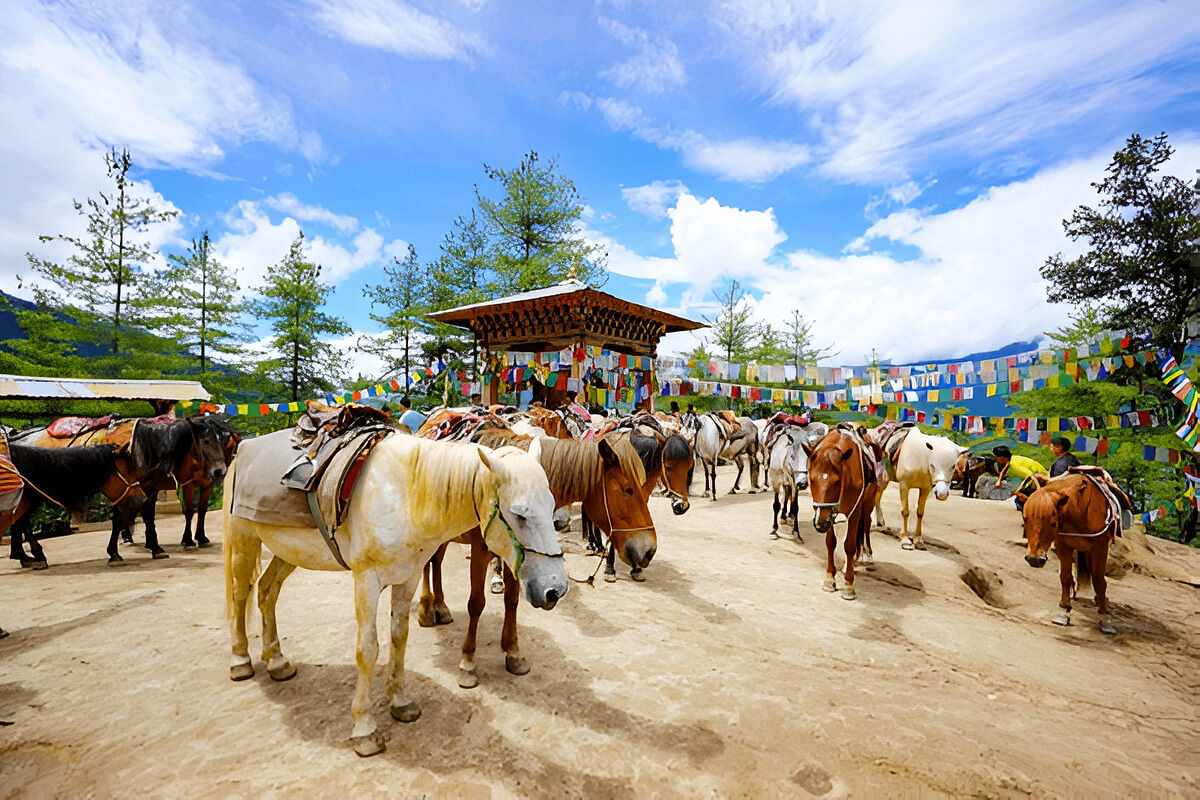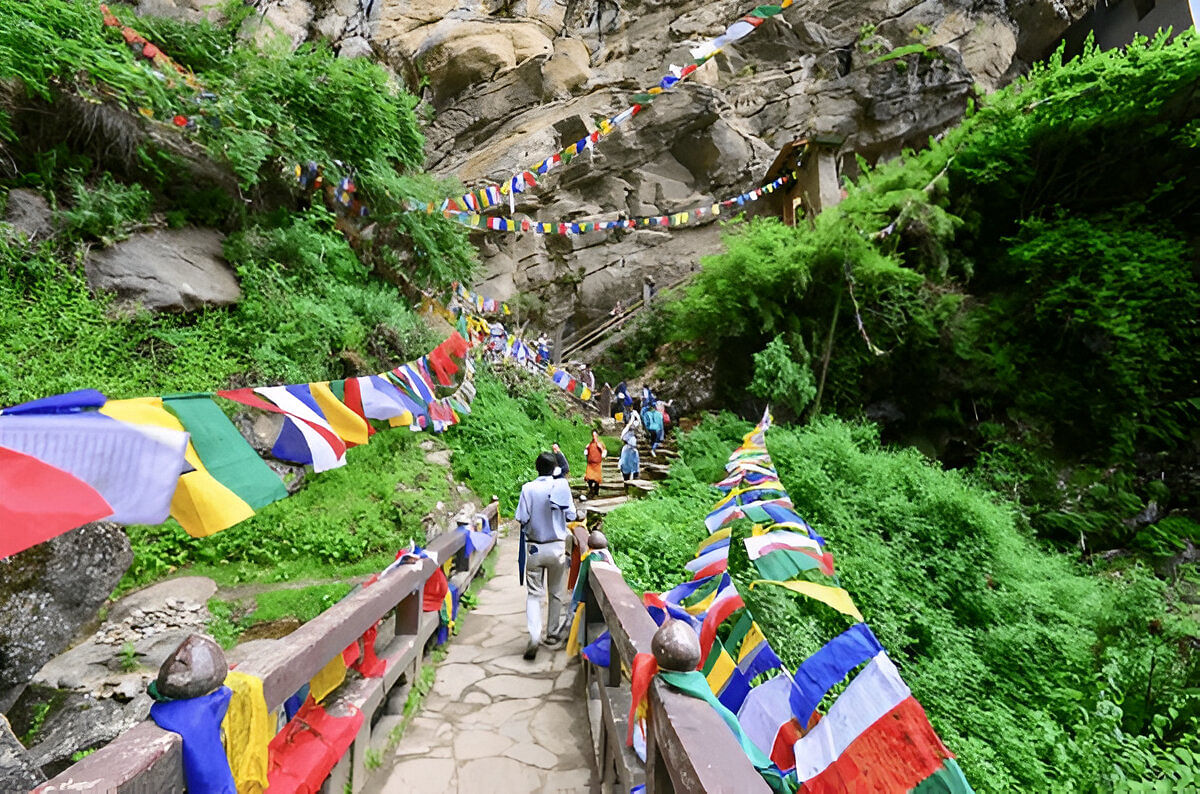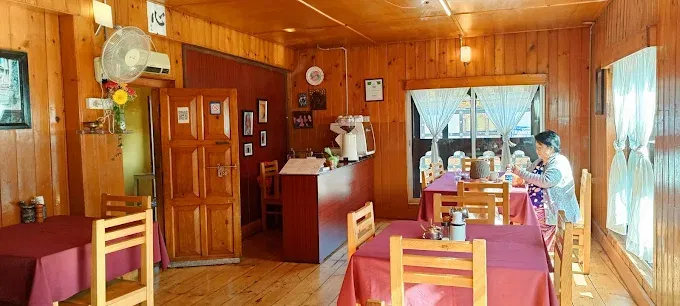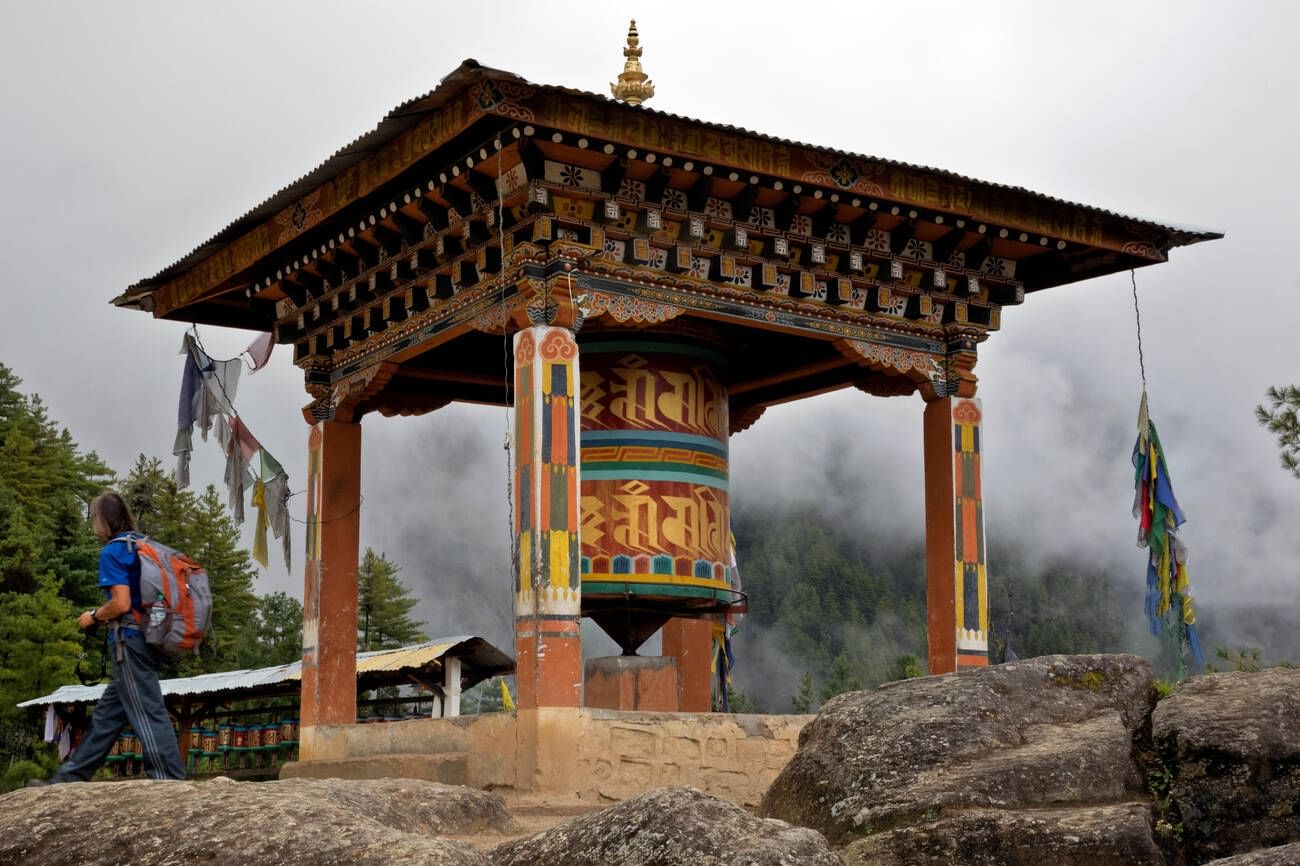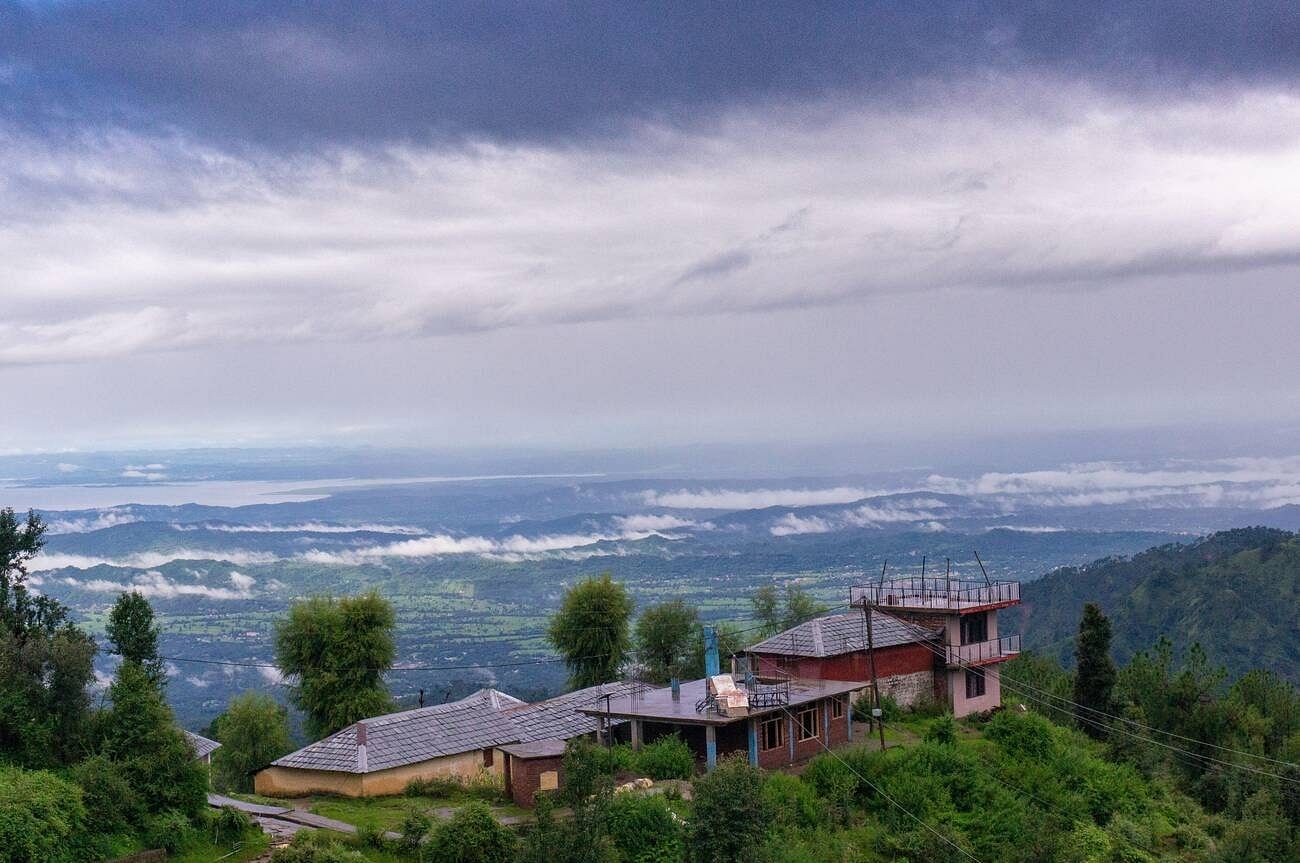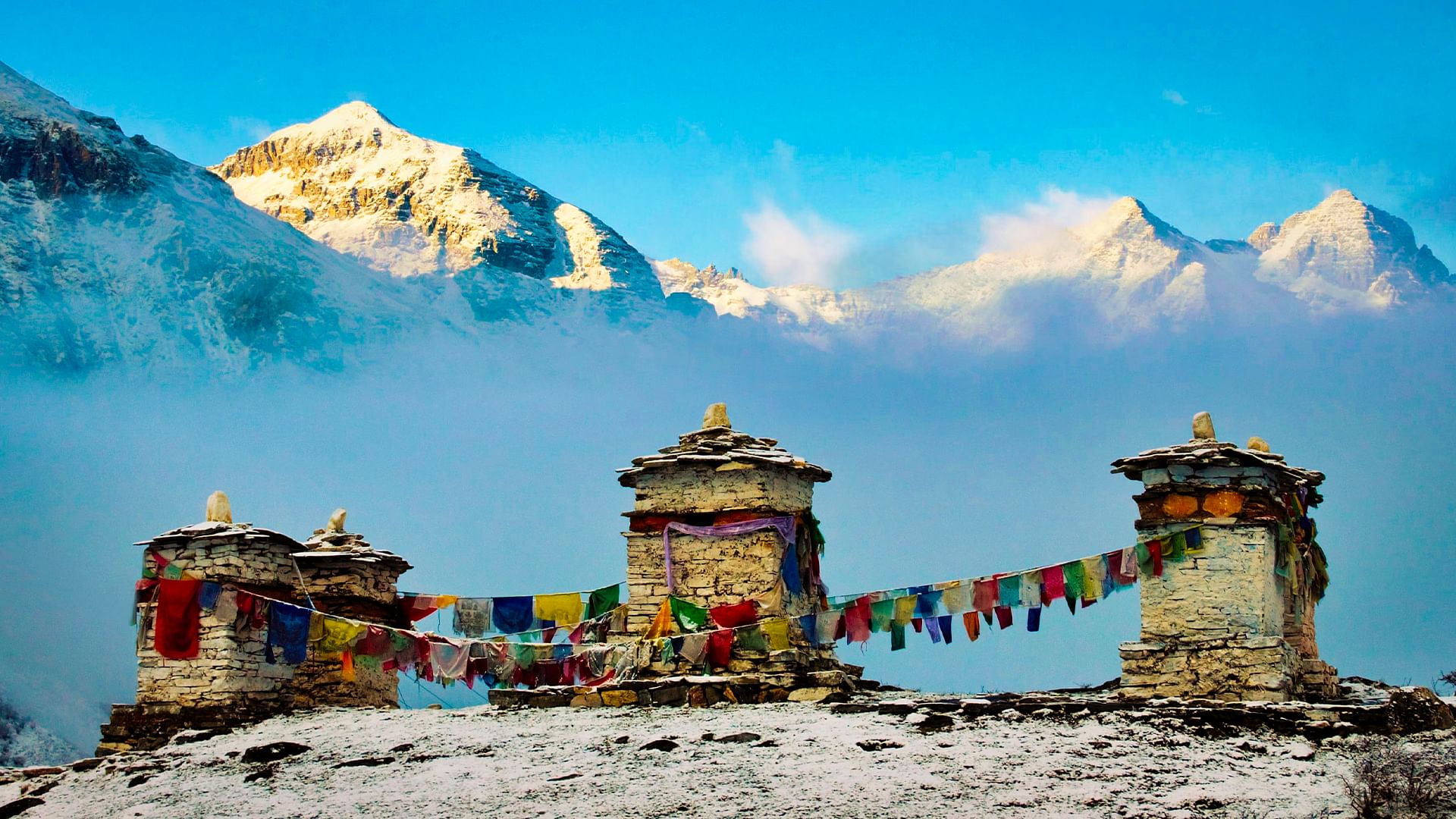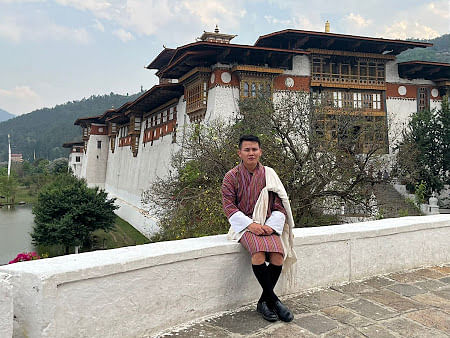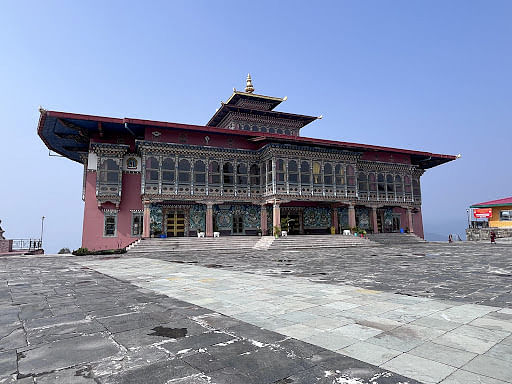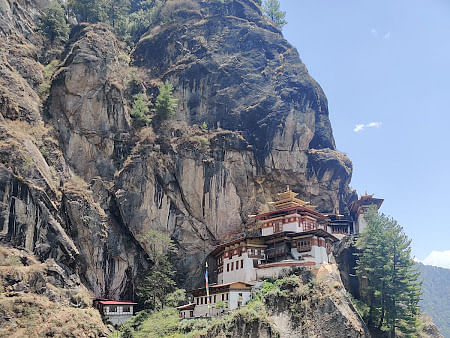Search for Bhutan online and the first image you'll see is the stunning Tiger's Nest Monastery clinging to that massive cliff. It's basically become Bhutan's poster child - you can't think of the country without picturing this incredible temple.
What's mind-blowing is how they managed to build this thing 2,600 feet up a sheer rock face, sitting way up at 9,700 feet above sea level. Even people who are only in Bhutan for a quick trip make this their number one priority. And honestly, who can blame them? The place is absolutely gorgeous.
The fact that it's pretty close to Paro Airport makes it super accessible too, which is probably why it's packed into practically every travel itinerary. Our Bhutan Tour Packages definitely include a stop here - it would be crazy not to.
Before we know more about the Tiger Nest Bhutan, let us tell you that this monastery is also popular by several other names which we will be using throughout this blog. Here’s a list of the alternative names for Tiger’s Nest Bhutan:
- Paro Taktsang
- Taktsang Monastery
- Taktsang Palphug Monastery
- Copper-Colored Mountain Paradise of Padmasambhava
- Temple of the Guru with Eight Names
About the Tiger’s Nest Trek
- Elevation: 3,120 meters (10,240 ft)
- Total Distance: 6.4 km
- Time Required: 3-6 hours depending on your pace.
- Difficulty: Easy
- Timings: 8:00 AM - 1:00 PM, 2:00 PM - 6:00 PM
- Entry Fee: INR 500
- Distance From Paro: 12 km
History of Tiger's Nest - Why Is It Called The Tiger’s Nest In Bhutan?
The history of Tiger's Nest is as fascinating as the monastery itself. Perched high on a cliff in the Paro Valley, this sacred place is officially called Paro Taktsang Monastery Bhutan. Legend has it that Guru Padmasambhava, known as Guru Rinpoche, flew to this cliff on the back of a tigress to meditate in the 8th century. That cave became the heart of the monastery, which later grew into the magnificent Tiger's Nest Bhutan we see today.
The taktsang, Paro Taktsang history shows a blend of myth and devotion. In 1692, Gyalse Tenzin Rabgye, the fourth Druk Desi (civil ruler), built the monastery around the sacred cave. Over the years, it faced fires and natural wear, but each restoration preserved the spiritual essence while maintaining the architectural beauty of Paro Taktsang Monastery.
Today, the Paro Taktsang Monastery Bhutan is more than a historic site. It is a living, breathing part of Bhutanese culture where monks pray, pilgrims meditate, and visitors from around the world marvel at its beauty.
Significance of Tigers Nest
The significance of Tigers Nest goes beyond its stunning cliffside location. For Bhutanese Buddhists, it is a place of deep meditation and spiritual connection. Pilgrims climb the steep trails to light lamps, meditate, and follow in the footsteps of Guru Rinpoche.
The significance of Tigers Nest also extends to Bhutanese culture. It is a symbol of faith, resilience, and identity. Visiting this sacred site allows you to feel the quiet power and spiritual aura that has drawn people here for centuries.
The monastery in Bhutan opens at 8 AM, then typically closes around 1 PM, re-opening again from 2 PM to 6 PM. Starting early helps you avoid crowds and hike in peaceful morning air-many guides recommend reaching the base before sunrise and catching the soft golden light across the valley.
A note on fees: until 2023 the entrance was included in the standard tourism package for foreigners. But since a policy revision in March 2023, a direct 500 INR to 1,000 INR entrance fee may now be levied at the trek’s start, depending on visa or tourism package details.
Architecture of Tiger's Nest Monastery
The architecture of Tiger’s Nest is a mix of beauty, tradition, and skill. Building a monastery on a cliff wall is no easy task, but the Bhutanese people made it possible.
The walls are white, with golden roofs that shine in the sunlight. The small courtyards and temples inside the monastery hold statues, paintings, and shrines. Monks live and pray here, carrying on the teachings of the Buddha.
Each corner of the Tiger Nest Monastery has something to see - whether it’s a sacred statue, an old mural, or a window with a view over the valley.
Best Season to Visit Tiger’s Nest Bhutan
While you can visit Tiger’s Nest monastery year-round, the best time to visit Paro Taktsang is spring (March-May) and autumn (September-November). The weather is crisp, the skies are clear, and the temperatures are comfortable. The best time to visit Paro Taktsang is early morning, when soft sunlight illuminates the cliff and the valley below.
Spring brings blooming rhododendrons and shy pine blossoms. Autumn brings changing leaves and clear air. Winter can be cold, sometimes icy; monsoon season (June-August) brings rain and slippery trails. Regardless, every season is beautiful and different-just prepare accordingly.
How to Reach Tiger’s Nest (Paro Taktsang Monastery)
1. Arriving in Bhutan & Getting to Paro
For those wondering how to reach Paro Taktsang in Bhutan, flights to Paro International Airport are the usual starting point.
- By Air: Most visitors arrive via Paro International Airport, Bhutan’s only international airport. Flights operate from cities like Delhi, Kathmandu, Bangkok, and Singapore, on airlines such as Druk Air and Bhutan Airlines.
- By Land (from India): Travelers can cross into Bhutan via Phuentsholing on the India-Bhutan border. From there, it’s a scenic 4 hour (approx. 143 km) drive to Paro Valley.
2. Paro to the Trailhead
- From Paro town, it’s a 10-12 km drive (about 25-30 minutes) to the Taktshang Trailhead / parking area where the Tiger’s Nest trek begins.
- All foreign visitors must be accompanied by a licensed Bhutanese guide, who typically provides hotel pick-up, trailhead drop-off, and return transport arrangements
Tourists must travel with a licensed Bhutanese guide and driver, as independent travel is restricted. Your guide will drive you approximately 10-12 km from Paro town to the trailhead parking area that marks the start of the climb to Paro Taktsang Monastery.
The trek starts here-at roughly 3,120 m above sea level, and about 900 m above the valley floor. From the parking lot, the trail is clearly marked and passes by vendors offering trekking poles, snacks, and the option to rent a horse or mule for part of the way.
The Trek to Tiger’s Nest (Short but Worth Mentioning)
Let’s be clear - this isn’t a mountain expedition. But the Tiger’s Nest trek does require some effort. It’s about 2 hours uphill, and depending on your fitness level, it can feel like a bit of a workout.
Along the way, you’ll pass tall pine trees, chortens (small Buddhist shrines), and stretches of quiet forest. Horses are available for part of the trail if you don’t feel like walking all the way.
Halfway up, there’s a lovely little cafe with a killer view of the monastery. This is usually where most people stop to rest, sip butter tea, and take photos.
Even though this article isn’t about the hike itself, the walk is part of the experience. Every step brings you closer to something amazing.
Total round‑trip distance is approximately 9-7 km; one‑way is about 4-5 km, with an elevation gain of roughly 900 m(3,000 ft) above valley level.
Time to complete:
- Upward trek: 2-3 hours
- Overall time (including return, rest, and viewing): 4-6 hours.
The trail begins gently and becomes steeper, especially after the midpoint. It includes about 700 stone steps down and 250 steps up at the final stretch to the monastery gate.
The Ride Option: Horse or Mule
If you prefer not to walk the entire way, it is possible (for a fee) to ride a horse or mule up to the mid‑point cafe area. Prices range from 600 to 1,500 INR (roughly USD 10-25), depending on how far the ride goes. After that, the steepest portion of the trail must be completed on foot. Most locals recommend hiking the full way as a mark of personal and spiritual merit.
Entry Restrictions In Tiger Nest Monastery
There are special dates on the Bhutanese lunar calendar whereby only Bhutanese will be allowed to visit Taktsang. The six auspicious dates in the Bhutanese calendar are:
- 5th of the 1st month (Chotrul Duchen)
- 10th day of the 3rd month (Zhabdrung Kuchoe)
- 15th day of the 4th month (Lord Buddha Parinirvana, Vesak Day)
- 4th day of the 6th month (first sermon of Lord Buddha)
- 22nd day of the 9th month (Descending day of Lord Buddha)
- 10th day of the 5th month (Birth anniversary of Guru Rinpoche)
Places to Eat Near Paro Taktsang
After visiting Tigers Nest Bhutan, here are some great options to enjoy a meal or snack:
- Local Bhutanese Restaurants in Paro Town
- Try ema datshi (chilli and cheese stew) with red rice, a classic Bhutanese dish.
- Other favourites include momos (steamed dumplings), thukpa (noodle soup), and buckwheat pancakes.
- Popular restaurants: Sonam Trophel Restaurant, Mountain Cafe, Cafe Norbuling.
- Tea Houses Along the Trek
- Small cafés along the trail offer herbal teas, coffee, and snacks like nuts or local sweets.
- Perfect for a quick rest while enjoying stunning views of the valley.
- Family-Run Traditional Restaurants
- Experience authentic Bhutanese set meals with rice, seasonal vegetables, and locally sourced meat.
- Offers a taste of home-cooked Bhutanese flavours.
- Vegetarian & Non-Vegetarian Options: Most restaurants cater to all preferences, so everyone can enjoy a satisfying meal after the hike.
- Relax & Recharge: Planning your meals around the trek ensures you can refuel, relax, and enjoy the local flavours after exploring Paro Taktsang Monastery Bhutan.
7 Useful Tips for Visiting the Tiger’s Nest
- Start early to enjoy the peace and cool weather at the Tiger’s Nest.
- Wear sturdy walking shoes and carry sunscreen, a hat, and a warm jacket.
- You can rent a walking stick at the base of the Tiger Nest Monastery if needed.
- Stay hydrated and take it slow - the Tiger’s Nest trek gains about 700 meters in elevation.
- Breathe steadily to avoid fatigue during the Tiger Nest in Bhutan climb.
- Bring some snacks to enjoy at the top of Paro Taktsang Monastery to recharge for the return.
- Leave electronics and cameras at the gate. Photography is not allowed inside the Tiger’s Nest Monastery.
- Respect the rules: remove shoes and headgear before entering Taktsang Monastery Bhutan, a famous monastery in Bhutan.
Visiting Tiger’s Nest is more than travel-it’s stepping into a place of legend, spirit, and natural beauty. Whether you're a curious wanderer, spiritual seeker, photographer, or simply someone looking to pause, this place welcomes you.
You may arrive with expectations-but tiger’s nest monastery will give you something more: perspective, stillness, a memory of soaring rock and fluttering flags.
That memory stays. And when you think of Bhutan later on, it’s almost certain that what you’ll remember first is Tiger’s Nest-standing proud above a valley, in mist or sun, offering peace and wonder.




